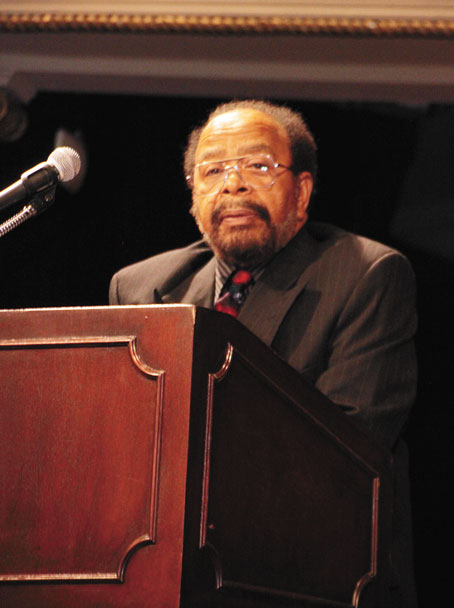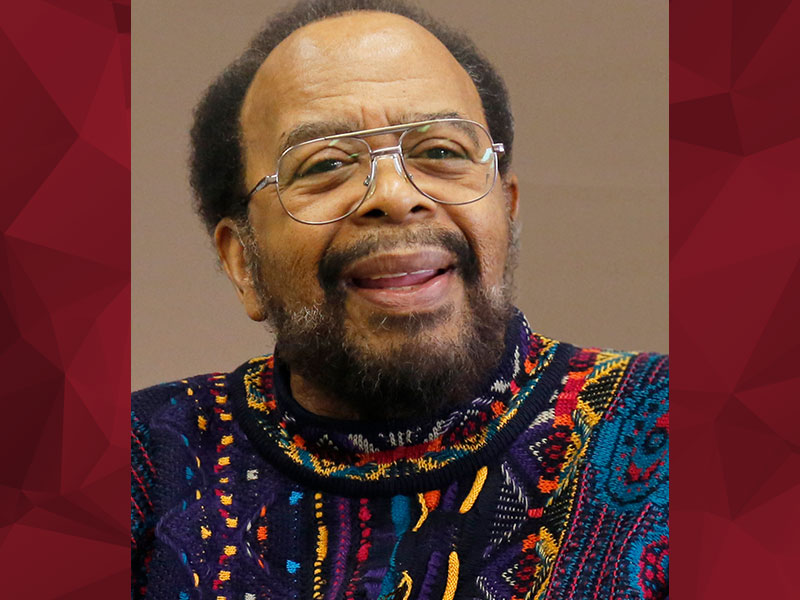DR. RALPH PROCTOR PASSED AWAY ON FRIDAY MORNING, FEB. 2, ACCORDING TO HIS SON.
In the “Something People Might Not Know About Me” section of the CCAC website that houses Ralph Proctor’s bio, he said that “despite a very public life…I really am quite introverted and rather shy.”
Well, that “introverted” and “rather shy” person met with Dr. Martin Luther King Jr., participated in the civil rights movements of the ’50s and ’60s, wrote three books, hosted radio and television programs like WQED’s “Black Horizons,” spent decades giving public speeches, created Diversity, Equity and Inclusion programs and traveled extensively through Africa.
And still, that doesn’t seem like anywhere near enough to describe Ralph Proctor, Ph.D., and his accomplishments.
Dr. Proctor died on Friday morning, Feb. 2, according to his son.
“Brother Proctor was the consummate fearless warrior for justice,” said Ronald Saunders, President of the Dr. Edna B. McKenzie Branch of ASALH (Association for the Study of African American Life and History), in a statement to the New Pittsburgh Courier. “He would tackle Jim Crow and racism regardless of where it reared its ugly head, whether it was at the University of Pittsburgh, the United States Military, WQED or any other venue. Brother Proctor had great love for Black people and traveled the African continent collecting art from various nations and tribes.”
Saunders told the Courier he grew up with Dr. Proctor in the Hill District, as they both attended Robert L. Vann Elementary School and Herron Hill Jr. High School. Dr. Proctor attended Schenley High School.
Dr. Proctor earned a B.S. in Psychology in 1965 and his doctorate in History in 1979, both from the University of Pittsburgh. Dr. Proctor was a teacher and later, assistant dean in Pitt’s School of Arts and Sciences from 1968 to 1973. Dr. Proctor was the host of WQED-TV’s “Black Horizons” community affairs show from 1968- 1971. He was the author of three books: “Racial Discrimination Against Black Teachers and Black Professionals in the Pittsburgh Public School System—1834-1973,” “Voices From the Firing Line; A Personal Account of the Pittsburgh Civil Rights Movement,” and “Song of The Hill; Life, Love, Legacy.” Dr. Proctor also was hired as executive director of the Kingsley Association in 1978 and served for nearly 20 years.

In 2001, Dr. Proctor became a professor in ethnic and diversity studies at CCAC (Community College of Allegheny County), later becoming chairman of the entire program at the school. But that wasn’t all. He created the Office of Institutional Diversity & Inclusion at CCAC and served as its first vice president, under then- CCAC President Dr. Stewart Sutin. Dr. Proctor also said in his CCAC bio that he proposed to the CCAC Board of Trustees that the school construct a new science building on its main campus named after an African American icon, K. Leroy Irvis, the former Pa. Speaker of the House. The K. Leroy Irvis Science Center now sits on Ridge Avenue.
Dr. Proctor also was a nationally-recognized collector of African art, of which he donated some of the collection to the University of Pittsburgh’s African Heritage Classroom Committee in 2013.
“Ralph Proctor represented an era in Black Pittsburgh that was emerging from the ashes of America’s racial oppression to the realization of its promise,” expressed Samuel Black, Director of African American Program at the Heinz History Center, exclusively to the Courier, Feb. 6. “Ralph had a fire of determination and belief in equality that carried him into different areas of community and work. Typical of the Black leadership shown by Pittsburgh legends Martin Delany, Mal Goode, and Cum Posey, Ralph Proctor excelled in several professions, all seemingly for the benefit of himself and the community. He was a Hill District vanguard, proud and honored with the badge of being from and living in the Hill.”
Born in 1938 and raised on Wylie Avenue, Dr. Proctor has said that so many publications or books have inaccurately portrayed the history of the Hill District. In an interview with the online publication Next Pittsburgh in 2023, Dr. Proctor said that the City of Pittsburgh “stigmatized” the entire Hill District to “justify urban renewal” such as building the Civic Arena in the Lower Hill and displacing thousands of residents.
“There was a time when the Lower Hill, of course, had drunks. Had drug addicts. Had crime,” Dr. Proctor said in the Next Pittsburgh article. “But they didn’t talk about what else was going on in the Lower Hill, that it was essentially a United Nations where people of all colors, creeds, nationalities, got along beautifully.”
He discussed his viewpoint of the Hill in his book, “Song of The Hill.”
Black conducted a series of oral histories with Dr. Proctor in the summer of 2022. “The two were inseparable—Ralph and the Hill,” Black told the Courier. “He had a chance to not hold back, talk about the community and the Black struggle in Pittsburgh. We laughed at times but most times it was serious conversation. Through it all I learned so much about Pittsburgh, The Hill, and Ralph Proctor.”
Dr. Stephen Wells, CCAC’s Interim Chief Academic Officer, called Dr. Proctor an “incredible asset to the institution.” Dr. Wells also told the Courier on Feb. 5 that Dr. Proctor was “my role model as a passionate voice for change at the institution. He was always willing to speak his mind, but at the same time, I think what stood out to me most was his humility. He never shied away from speaking his mind with passion, with conviction, and I always admired that about him. And in the classroom, he always pushed his students to challenge their pre-conceived notions about the world, but none of it was ever about him; it was all about making his students better people, making the world a better place, making it a more accepting place to live.”
Dr. Wells told the Courier that while he was a member of the English department as a professor, he sat in on one of Dr. Proctor’s classes. He said he noticed how Dr. Proctor was “passionate” about having his students “think critically and carefully about what they saw around them in the world, and not to simply accept the status quo as the way things needed to be.”




